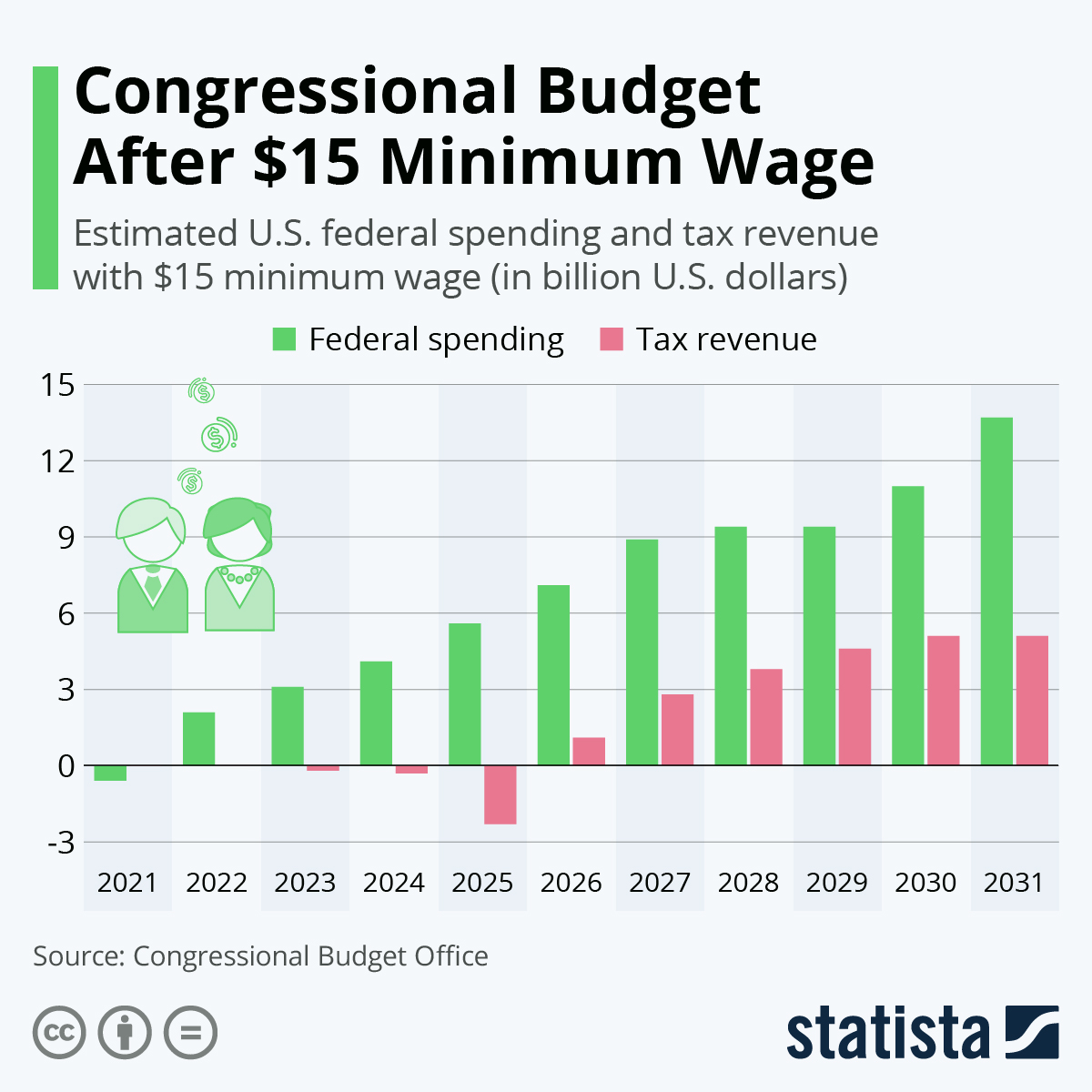Elected officials and the public are still mixed on the idea of raising the federal minimum wage from $7.25 to $15 an hour. Many are in agreement the bump in pay will bring millions out of poverty in the country during a time when it’s desperately needed, while others argue it’ll do more harm than good in the long run by forcing companies to cut jobs. A new report from the Congressional Budget Office highlights the positives and negatives of a debated $15 minimum wage, and shows how a significant portion of the country would be lifted out of poverty while also causing substantial job losses. Supporting data shows how federal spending would rise while tax revenue would fail to keep up for the first five years.
According to the new government report from the CBO, a $15 minimum wage would lift 900,000 Americans out of poverty but lead to the destruction of roughly 1.4 million jobs. A large part of their analysis comes from the effect a higher minimum wage will have on federal spending and tax revenue. The report’s supporting data shows how federal spending with a $15 minimum wage will rise considerably from $2.1 billion in 2022 to over $13.7 billion in 2031, while tax revenue isn’t expected to be positive until 2026 at $1.1 billion – growing to $5.1 billion by 2031.
Ultimately, the report found the proposed $15 minimum wage plan would increase spending power for low-income workers but also increase costs for businesses, particularly in large industries like restaurants. Some large corporations like Amazon have already moved to increase their starting wages to $15, while Walmart and other smaller rural businesses continue to resist a minimum wage hike. Most agree that the current minimum wage is far too low, but some see $15 as too high for the current economy. Those in favor of the increase say it’s worth it for the hundreds of thousands that would immediately be lifted out of poverty.













